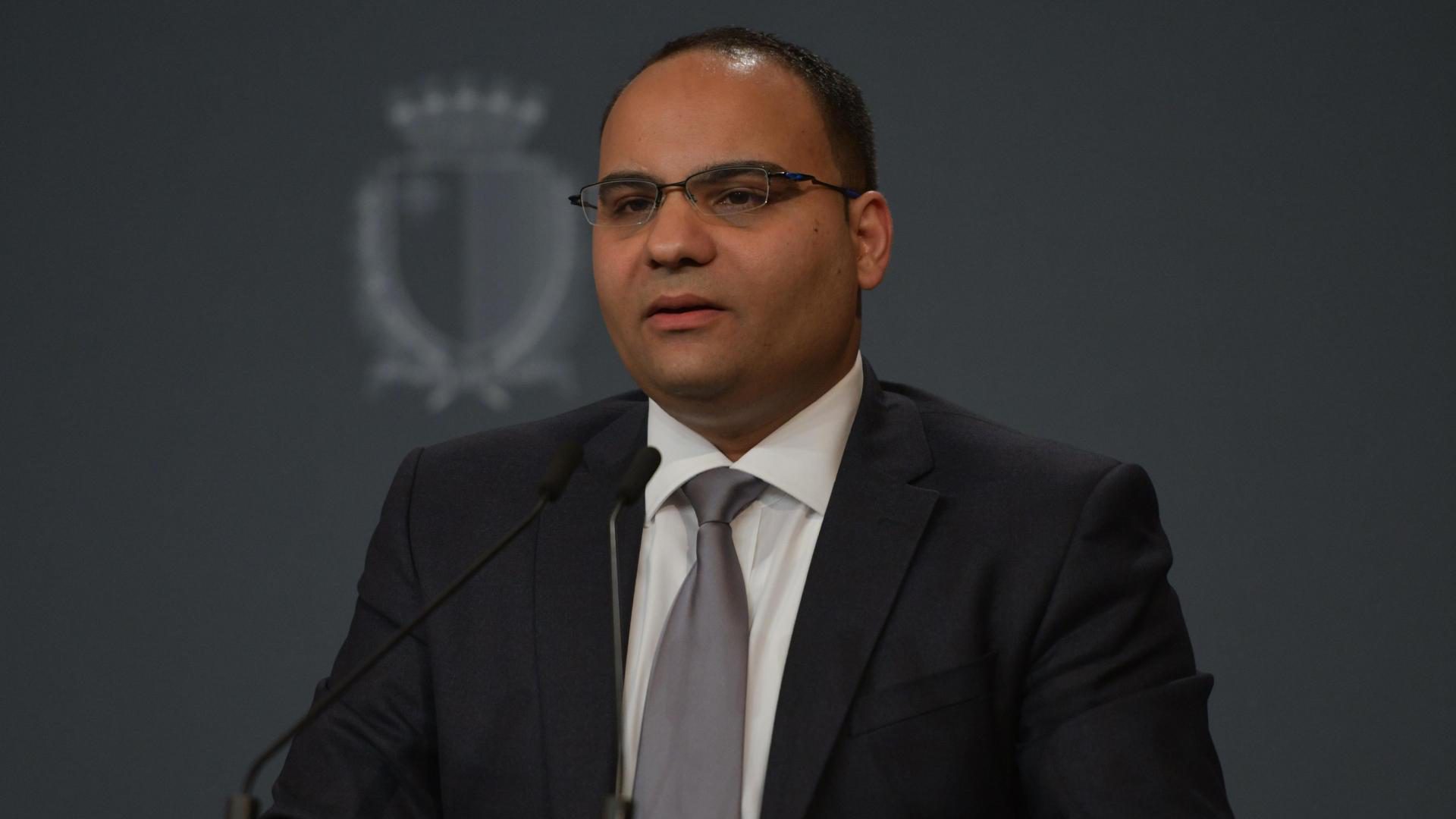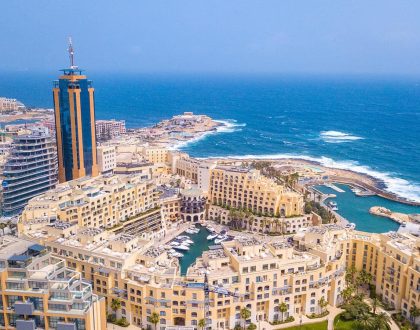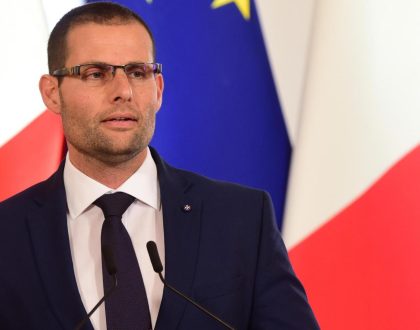Malta’s Economic Growth Forecast

Malta is poised to maintain a robust long-term economic growth trend of 4%, according to Finance Minister Clyde Caruana. Speaking during the launch of the public consultation for the government’s pre-budget document for 2024, Caruana shared insights into the country’s economic prospects and the factors contributing to this positive outlook.
In his address, Caruana highlighted that the growth rate for 2023 is currently at 3.9%, and it is expected to rise to 4.4% for the following year. This projected growth rate is particularly noteworthy when compared to larger economies like Germany, where the economy is anticipated to grow by a mere 1.5% in the coming year. Malta’s resilience and growth, Caruana explained, can be attributed to several key factors, including ongoing subsidies on energy and fuel prices.
As an illustrative example, Caruana pointed out that gas prices in Germany have reached levels not seen since World War II, with prices doubling. Emphasizing the importance of government subsidies, he cautioned against taking them for granted. Removing these subsidies, he noted, would have far-reaching repercussions, especially on electricity bills.
Caruana also addressed the issue of high fuel costs, emphasizing that discontinuing the current subsidy would lead to immediate price increases at the petrol pump. To mitigate the impact of rising fuel and energy prices, Malta allocated 1.5% of its total gross domestic product (GDP) in 2023. For 2024, the plan is to allocate 1.7% of GDP, equivalent to an estimated €100 million.
However, Caruana underscored that such government initiatives should not become the norm. He revealed that in 2022, the increase in expenditure primarily reflected government subsidies on energy, food, and Covid-19 support measures, accounting for 7.2% of the total expenditure for the year. Going forward, he stressed the need for Malta to shift its approach substantially to address the consequences arising from the Ukraine war.
Caruana pointed out that the country’s ability to maintain this growth rate is contingent on the employment sector, which serves as the driving force behind the economy. Currently, Malta ranks third in Europe in terms of employment rates. Figures indicate that the labor market participation rate surged to 80% in 2022, surpassing the European average.
Addressing the country’s deficit, Caruana noted that despite various government subsidies, Malta managed to reduce its deficit percentage from 7.8% in 2021 to 5.8% in 2022. For the upcoming year, Malta plans to further reduce its deficit to 4.5% in line with EU fiscal targets. Despite this deficit target, the minister stressed the importance of prudent spending to ensure financial stability in the face of potential economic challenges.
Regarding debt, Caruana highlighted that many European member states have recorded a decrease in the debt-to-gross domestic output (GDO) ratio over the years. Malta, in particular, has consistently maintained its percentage ratio below the European average of 60%, standing at 53.2% for 2023. However, this ratio is expected to increase by slightly over 1% to reach 54.5% in the coming year.
During the consultation launch, several stakeholders raised questions concerning the cost-of-living adjustment (COLA) measures for the upcoming budget. The Chamber of Commerce, in its pre-budget document, proposed eliminating taxes on COLA adjustments. Caruana acknowledged the proposal but noted that as a politician, he must balance this against the 4.5% deficit target. He indicated that the budget document is still in progress and did not rule out the possibility of considering the proposal.
Caruana also confirmed that the upcoming COLA increase would exceed last year’s €9.90. He emphasized that the entire increase would be borne by employers and stated that any proposal for the government to absorb part of the increase would not be entertained.
While not revealing specific details from the upcoming budget document, Caruana emphasized the need to consider a more global perspective when crafting the budget. He highlighted that the landscape is evolving rapidly, with the European Union expanding its membership and focusing on green economy and energy.
Caruana cited the speed of recent EU negotiations as evidence of this changing landscape, where agreements that previously took years to reach were now achieved in months. He emphasized the importance of preparing the budget to address upcoming challenges that extend beyond national borders.
FAQs:
What is Malta’s projected economic growth rate, and what did the Finance Minister say about it?
Malta is expected to maintain a 4% long-term economic growth trend, as stated by Finance Minister Clyde Caruana during the launch of the pre-budget document for 2024. For 2023, the growth rate stands at 3.9%, with a projected increase to 4.4% for the following year.
How does Malta’s projected economic growth compare to that of larger countries like Germany?
Malta’s projected economic growth rate is notably higher than that of larger economies like Germany, where the economy is expected to grow by only 1.5% in the coming year.
What factors contribute to Malta’s economic growth, according to the Finance Minister?
Several factors contribute to Malta’s economic growth, including ongoing subsidies on energy and fuel prices. These subsidies act as a cushion for inflation and play a crucial role in supporting the economy.
What are the potential repercussions if government subsidies on energy and fuel prices are removed?
The Finance Minister warned that removing government subsidies on energy and fuel prices would result in immediate price increases, especially on electricity bills and at the petrol pump. The impact on consumers would be significant.
How much of Malta’s GDP has been allocated to cover spikes in fuel and energy prices for the current year?
Malta has allocated 1.5% of its total gross domestic product (GDP) to cover the high spikes in fuel and energy prices for the current year. For 2024, the plan is to allocate 1.7% of GDP, approximately €100 million, for this purpose.
What percentage of Malta’s total expenditure in 2022 was attributed to government subsidies?
In 2022, government subsidies on energy, food, and Covid-19 support measures accounted for 7.2% of Malta’s total expenditure for the year.
How does Malta plan to address its deficit in the upcoming year?
To adhere to EU fiscal targets, Malta plans to reduce its deficit to 4.5% in the upcoming year. The Finance Minister emphasized the importance of prudent spending to maintain financial stability.
What is Malta’s current debt-to-GDO ratio, and how does it compare to the European average?
Malta’s current debt-to-gross domestic output (GDO) ratio stands at 53.2% for 2023, well below the European average of 60%. However, this ratio is expected to increase slightly to 54.5% in the coming year.
What is the proposal regarding the cost-of-living adjustment (COLA) in Malta’s pre-budget document?
The Chamber of Commerce proposed eliminating taxes on COLA adjustments in its pre-budget document. However, the Finance Minister indicated that a final decision would depend on balancing this proposal against the 4.5% deficit target.
What information did the Finance Minister provide about the upcoming COLA increase?
The Finance Minister confirmed that the upcoming COLA increase would exceed last year’s €9.90. He emphasized that employers would bear the entire increase and stated that any proposal for the government to absorb part of the increase would not be considered.
Recommended Posts

Malta’s SMEs Concerns Over Economy
October 27, 2023

Malta – €52 Million Deficit in 2023
October 27, 2023

Court criticism of Prime Minister
October 26, 2023
